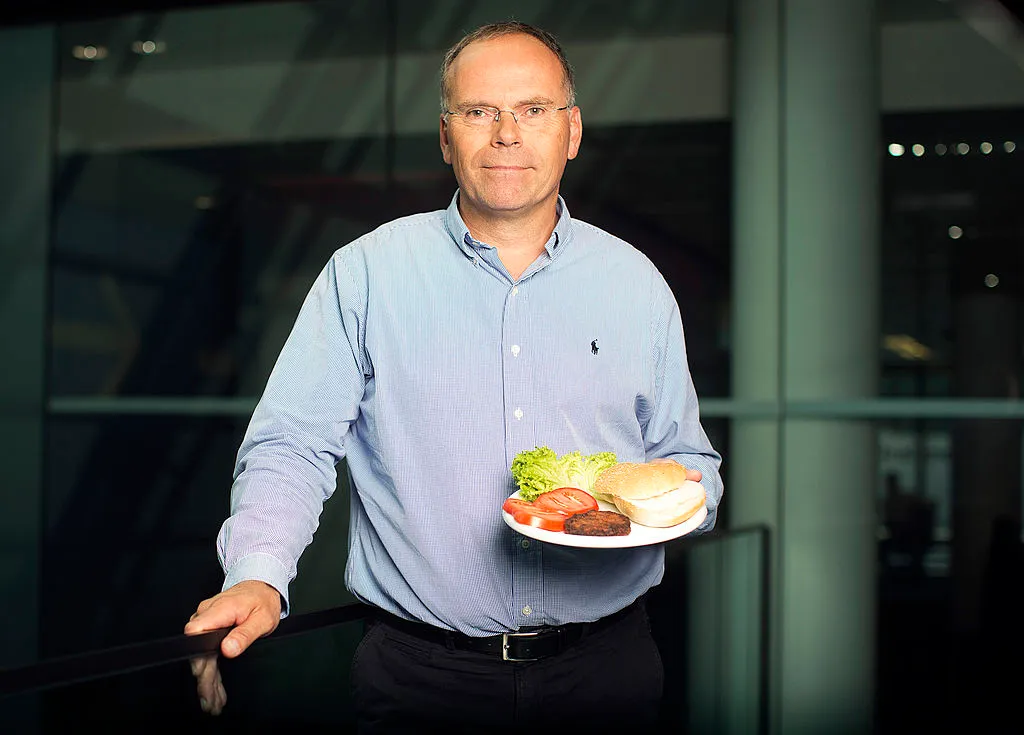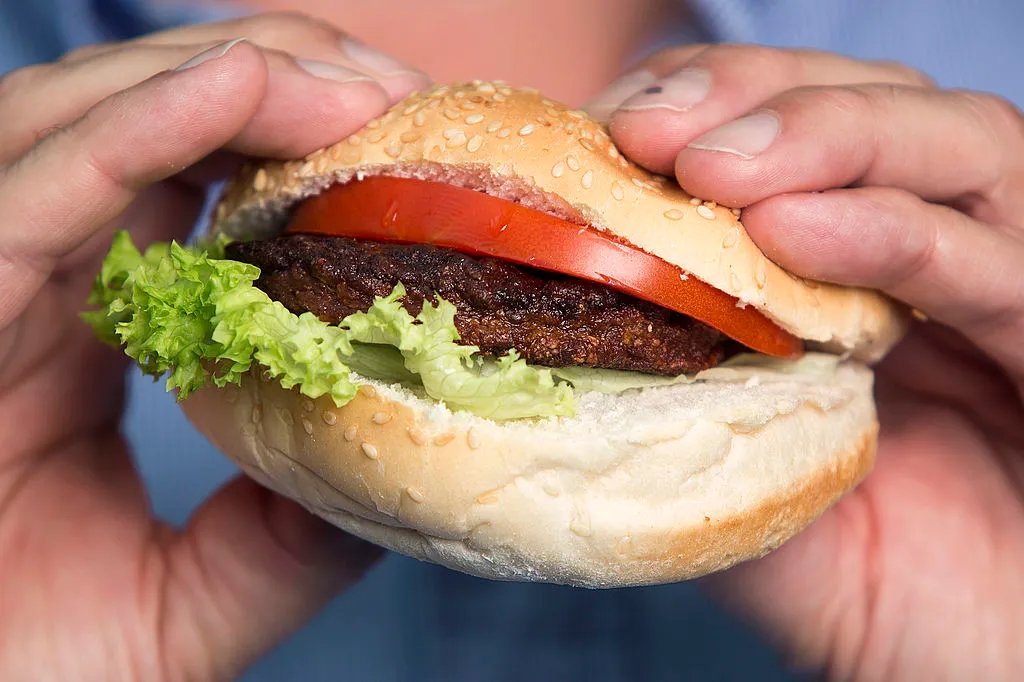Back in 2013, the world watched as food critics tucked into the first ever lab-grown burger. Thesmall pink patty, prised out of a petri dish and fried in front of the media, was proof that it was possible to grow safe and edible meat without slaughtering a single animal. There was just one problem: the patty had taken two years and over $300,000 to produce.
But since then the cost of producing this high-tech meat has plummeted. In January 2016, a company calledMemphis Meats produced a ‘cultured meatball’ for around $1,000, and today start-ups and non-profit organisations are working on other lab-grown animal products including pork, chicken, turkey, fish, milk, egg whites, gelatin, and even leather.
Dr Mark Post, the Dutch scientist who created the $300,000 burger, believes it would be possible to make improved versions of the patties for around $10 each if his technology could be scaled up to the level of an industrial food process.

So how long will we have to wait until we’re able to buy artificial meat like sausages and steaks in our supermarkets? Will they taste like the real thing, and will anyone actually buy them?
Cultured meat
Lab-grown meat comes in many other names; cultured meat, in vitro meat, synthetic meat, and is made by growing muscle cells in a nutrient serum and encouraging them into muscle-like fibres. Simpler animal products, such as artificial milk or hen-free egg whites, can be created by yeast that has been genetically altered to produce the proteins found in milk or eggs, which are then extracted and blended in the right amounts.
In fact, using ‘cellular agriculture’, there’s no reason why scientists couldn’t grow artificial meat with characteristics from a combination of animals, or enhance lab-grown meat with healthier fats, vitamins or vaccines. We could even taste the flesh of rare animals that nobody would dream of slaughtering forfood. Panda burger, anyone?
For now, the race is on to make the first affordable cultured meat products. The need to find credible alternatives to traditional meat is urgent. Livestock farming takes up a huge amount of land and water per calorie of food compared to crops, and in terms of greenhouse emissions, is as bad as burning fossil fuels, according to the UN. Rising incomes in developing countries means that more people are eating meat than ever before, reducing the amount of land available for much-needed crops, and contributing to climate change. Of course, being able to grow meat artificially can only have a positive impact on animal welfare, too.
So when will we be able to buy animal-free meat? Both Memphis Meats and Mosa Meat, an offshoot of Post’s lab, hope to have competitively priced products by 2020. “In terms of commercial sales, I would say in four to five years,” says Post. “It will still be a somewhat expensive burger, around the $10 mark. Another few years of commercial production and the price will start to fall further.”
Manufacturing meat in vitro
The science behind growing meat without animals is fairly simple. Growing the cells that form cultured meat is not hugely different from other ‘cell culture’ methods that biologists have used to study cells since the early 1900s.
The process starts with a few ‘satellite’ cells, which can be obtained from a small sample of muscle taken from a live animal. These are stem cells that can turn into the different cells found in muscle. Just one cell could, in theory, be used to grow an infinite amount of meat. When fed a nutrient-rich serum, the cells turn into muscle cells and proliferate, doubling in number roughly every few days.
After the cells have multiplied, they are encouraged to form strips, much like how muscle cells form fibres in living tissue. These fibres are attached to a sponge-like scaffold that floods the fibres with nutrients and mechanically stretches them, ‘exercising’ the muscle cells to increase their size and protein content. The resulting tissue can then be harvested, seasoned, cooked and consumed as boneless processed meat.
The challenge facing Post and others in the field is upscaling the process. To grow cells industrially requires a large ‘bioreactor’ – a high-tech vat that can provide the perfect conditions for growth but also the movement and stimulation to exercise the cells. The largest existing bioreactor capable of doing this has a volume of 25,000 litres (about one-hundredth the size of an Olympic swimming pool), which Post estimates could produce enough meat to feed 10,000 people. It’s likely that many more of these would be needed to make a viable meat-processing plant.
An alternative idea is to encourage shops and restaurants to grow their own meat on a smaller scale. In September 2016, SuperMeat, an Israeli biotech company, launched acrowdfunding campaignto raise $100,000, which they more than doubled, to develop cultured-chicken-growing devices that could be “placed at grocery stores, restaurants, and ultimately in consumer homes”.
Another issue is the nutrient-rich ‘serum’ that feeds the cells. Successful serums have been a cocktail of sugars, amino acids and animal blood. Not only are blood-based serums a source of worry for vegetarians and vegans, but “there would not be enough serum in the world to grow all the cells you need to mass-produce,” says Post.
He and other cultured meat companies are working on blood-free alternatives – but it’s not simple. “We are working out which substances in blood are required for growth,” he says. “There are tens of thousands of different substances in blood and there are a few magical ingredients required for every different cell type.”
How good is a lab-grown burger?
Achieving a taste and texture that rivals real meat seems to be the easy bit. Following a comment from the critics who tasted his original burger and said it was a bit dry, Post has started to culture fat cells and tissue from cows, which add moisture when mixed in with the muscle fibres. He has also discovered that starving the cells of oxygen can increase the amount of flavour-giving proteins in the final product.
Marie Gibbons, a researcher from North Carolina State University working on cultured meat production, says there is no limit to what scientists could do with flavour. “There’s no doubt that [cultured products] can be manipulated to achieve good flavour – it’s just a case of what chemicals react with your taste buds,” she says. She thinks cultured meats could eventually be tastier than traditional meat, although she adds: “At the moment the priority is to produce edible protein on a large scale. Then you can work on flavour components.”
The first crop of cultured meat products will inevitably take the form of burgers, nuggets and other processed meats – unprocessed meat has a complex structure of bone, blood vessels, connective tissue and fat, and grows in specific shapes. Yet it should eventually be possible to grow complex tissue like this too, says Dr Paul Mozdziak, Gibbons’s colleague at North Carolina State University. He and scientists at various cellular agriculture organisations (such asNew Harvest, SuperMeat and Future Meat) are keeping an eye on developments in regenerative medicine, the branch of biomedical science concerned with growing replacement organs and tissue for procedures such as skin grafts.

Regenerative medicine involves encouraging cells to grow on a scaffold so the resulting tissue mimics the precise layout of a living organ, with different types of cells in the right position, creating interconnecting, functional parts. However, the complexity of living tissue means that only relatively simple tissues like skin have been made with any success.
Still, a lab-grown pork chop or rack of ribs is perfectly feasible, says Mozdziak. “When the cultured meat and scaffolding worlds collide, then the industry will take off exponentially,” he says.
As well as animal parts for food, scientists could even grow organic items such as rhino horns in order to help prevent poaching.
What’s the beef?
In the shorter term, with more basic cultured meat products predicted to be ready by the turn of the decade, a bigger question may be whether people are ready to eat the stuff. Will consumers drink synthetic milk and eat lab-grown meat, or will they be put off? Genetically modified (GM) foods, for example, are still mistrusted by many.
Organisations such as theModern Agriculture Foundationare already preparing the ground for the arrival of in vitro meat, educating people about why we need it. The Foundation’s director, Shaked Regev, believes that cultured meat won’t have the same problem that existing meat alternatives face because it is so similar. “It’s the real deal – you can’t differentiate this from traditional meat under a microscope,” he says.

Polls suggest there’s a willingness to give this modern meat a go. One survey of the Dutch population indicated that 63 per cent of people were in favour of the concept of cultured beef, and 52 per cent were willing to try it.Another surveyby The Guardian found that 69 per cent of people wanted to try cultured meat. Whether people reach for the cultured burgers week in, week out at the supermarket is a different matter entirely, though.
People will always be extremely sensitive about what is on their plate. Despite the welfare and environmental justifications for cultured meat, the thought of your burger coming from a lab rather than a farm is a strange idea. But if artificial meat lives up to its promise and becomes the environmentally friendly, safer, cheaper, and even tastier way to eat meat, the concept of raising animals in their millions for slaughter could very quickly seem much stranger.
This is an extract fromThe Artificial Meat Factoryinissue 298ofBBC Focusmagazine – don't miss out on the full feature bysubscribinghere.
Follow Science Focus onTwitter,Facebook, Instagramand Flipboard